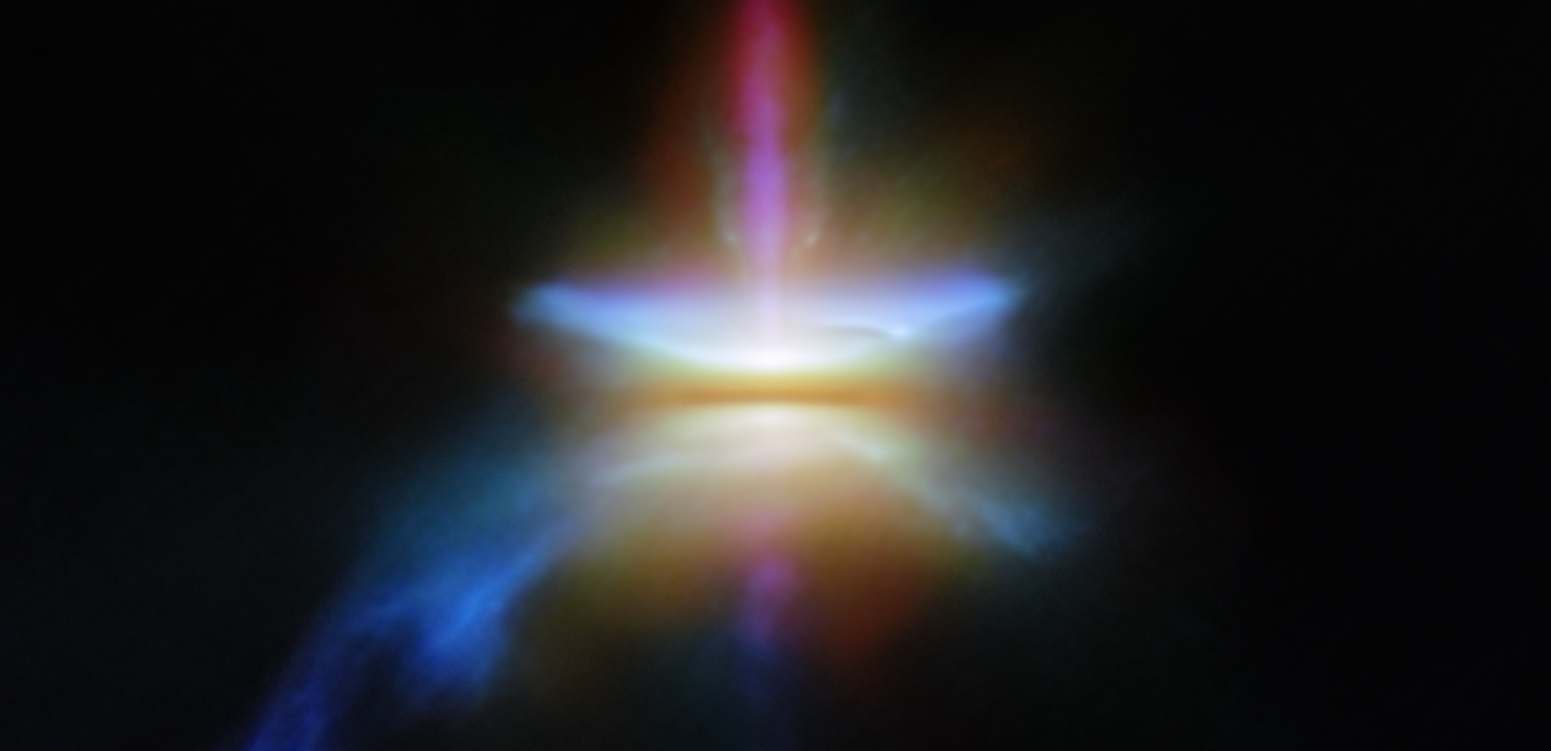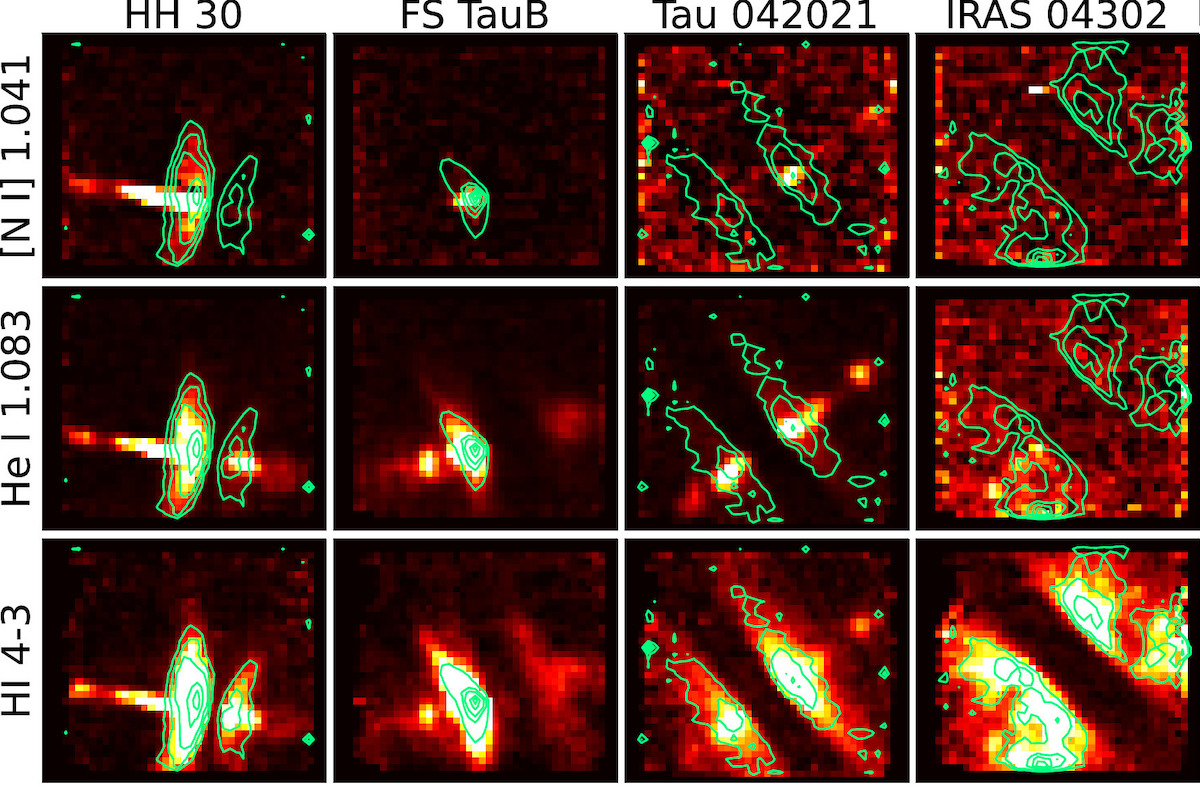From Cloud to Star to Planetary System
The transformation from a turbulent cloud of hydrogen gas to a star circled by planets is complicated. As stars coalesce from their natal clouds, they gather gas from their surroundings and flatten it into a dense, dusty disk. While feeding on the gas from this disk, young stars launch powerful, narrow jets and broad, slower-moving winds. As accretion slows, planets begin to form, getting their start from clumps of dust grains.
In a recent research article, JWST observations give insight into the details of this process, illuminating the winds and jets of the disks surrounding young stars.

James Webb Observations
Naman Bajaj (Lunar and Planetary Laboratory, The University of Arizona) and collaborators investigated four protoplanetary disks with JWST’s Near Infrared Spectrograph (NIRSpec). The four disks — Tau 042021, HH 30, FS Tau B, and IRAS 04302 — reside in the Taurus star-forming region, which is 1–2 million years old and roughly 450 light-years away.

Each of these disks displays narrow jets that emerge perpendicularly above and below the disk, nested within broad, cone-shaped winds. The disks were selected for their edge-on appearance, which highlights the jets and winds that emerge from the disk.
Bajaj’s team identified more than 40 emission lines for each disk, allowing them to determine the properties of the jets, such as the density and shock speed. One important aspect that can be gleaned from these observations is an estimate of the mass carried away by the jets. Using three independent methods, the team found that jet mass-loss rates for the four disks was on average a billionth of a solar mass per year.
The Wiggly Jet of Tau 042021
Though appearing to jut straight out from the disk, each of the jets studied showed signs of side-to-side wiggles. Tau 042021’s jets are especially interesting, displaying mirror-symmetric wiggling, in which the redshifted and blueshifted wiggles mirror one another. At present, the only explanation for these synchronized wiggles is a binary companion. By modeling the jet wiggles as emanating from a star in a binary system, the authors concluded that Tau 042021 likely contains a 0.33-solar-mass star and a 0.07-solar-mass star in a 2.5-year orbit with a separation of 1.35 au.
Bajaj and coauthors presented a rich dataset that illuminates the behavior of jets from young stars, and their work isn’t yet done ; this is the second research article the team has produced from these data, and more are in the works.
Reference
“Class I/II Jets with JWST : Mass-Loss Rates, Asymmetries, and Binary-Induced Wigglings,” Naman S. Bajaj et al 2025 AJ 169 296. arxiv.org/abs/2503.23319
